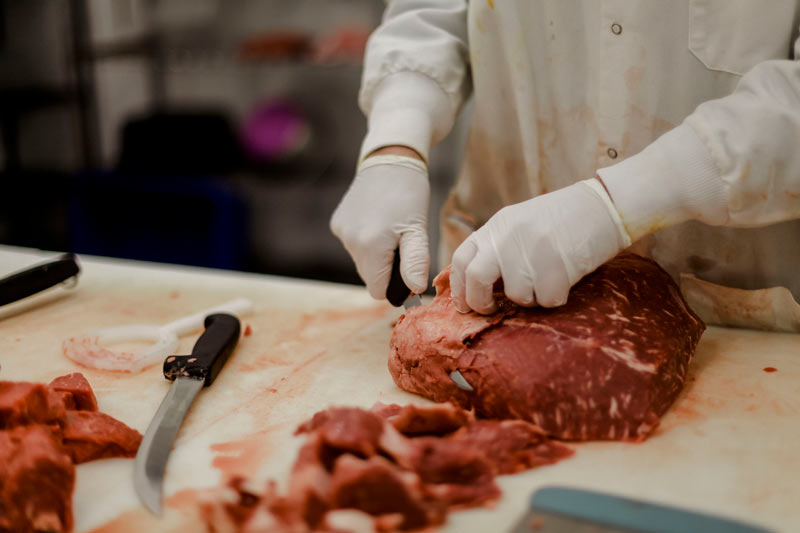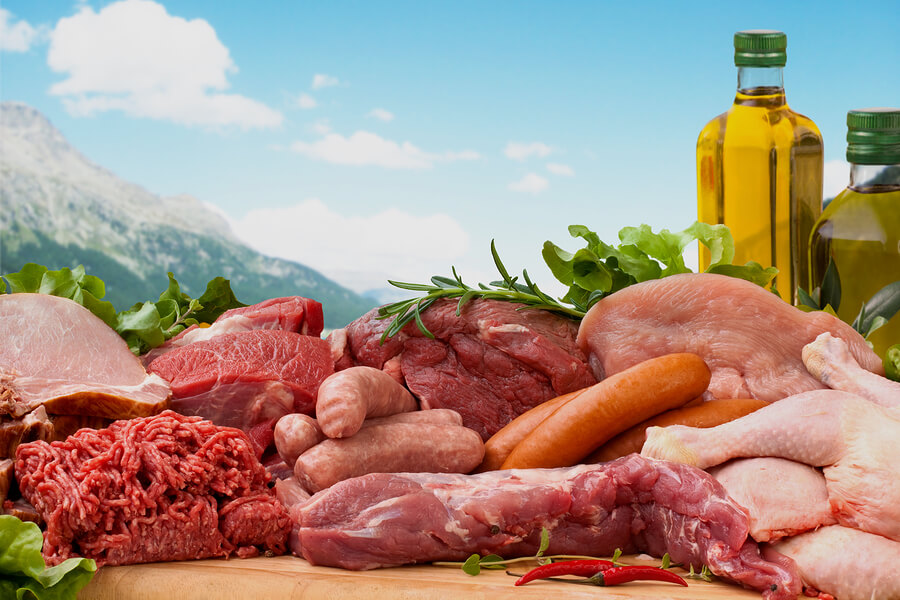Stop by Bagley Meat Market Edwardsville IL for custom cuts and high-quality meats.
Stop by Bagley Meat Market Edwardsville IL for custom cuts and high-quality meats.
Blog Article
Exactly How to Pick the Perfect Cut of Meat From a Trusted Meat Market
Selecting the ideal cut of meat from a trusted meat market requires a thoughtful method that stabilizes top quality, cooking function, and spending plan. Comprehending the different kinds of meat and their respective cuts is crucial, as is engaging with your butcher to gain understandings right into sourcing and preparation. Observing attributes such as shade, texture, and marbling can additionally assist your decision. As you think about these variables, it ends up being clear that the subtleties of your choice could significantly affect the result of your meal, motivating a much deeper exploration of the criteria that absolutely matter.
Understanding Meat Cuts


For example, the tenderloin is valued for its buttery structure and marginal connective cells, making it suitable for quick food preparation methods such as grilling or pan-searing. On the other hand, tougher cuts like the brisket or shank benefit from slow food preparation methods to break down collagen, producing rich and flavorful results.
Furthermore, the fat content of a cut plays a critical duty in flavor account and dampness retention during food preparation. Cuts with higher fat web content, such as ribeye, use a more durable taste, while leaner options, like sirloin, might call for careful prep work to prevent dry skin (bagley meat market edwardsville il). Recognizing these subtleties permits educated choices that raise cooking developments, guaranteeing that each recipe showcases the finest qualities of the picked meat
Variables to Consider
When selecting the ideal cut of meat, several vital elements enter into play that can considerably affect the final meal. Primarily, take into consideration the kind of meat you want-- beef, pork, lamb, or fowl-- as each offers one-of-a-kind flavors and appearances. The certain cut within that group is similarly vital; for example, ribeye delivers abundant marbling, while tenderloin gives a lean, buttery appearance.
One more variable is the cooking approach you prepare to make use of. Cuts appropriate for barbecuing, such as T-bones or sirloins, differ from those much better fit for slow food preparation, like chuck roasts or shanks. Additionally, quality is paramount; always choose meat with a lively shade and firm structure, indicating high quality and correct handling.
Costs cuts may supply remarkable taste, yet there are also affordable options that, when prepared correctly, can produce delicious outcomes. Balancing these aspects will certainly help you choose the best cut for your cooking requirements.
Questions to Ask Your Butcher
A butcher's experience can be very useful when selecting the suitable cut of meat for your cooking endeavors. Begin by inquiring regarding the source of the meat.
Next, inquire about the different cuts readily available for the sort of meat you prefer. An educated butcher will describe the subtleties of each cut, assisting you pick one that matches your cooking method and preferred result. Do not wait to make inquiries regarding the most effective food preparation strategies for a particular cut; butchers commonly have tips that can enhance your meal.
It's additionally prudent to ask about the meat's freshness. A great butcher will certainly be excited to share their proficiency and recommend cuts that will certainly thrill your palate. Engaging your butcher with these concerns can significantly enhance your meat choice experience.
Identifying Quality Meat

Appearance is another crucial aspect; high quality meat should feel firm and slightly resilient to the touch. Prevent any kind of cuts that feel slimy or exceedingly completely dry, as these can suggest putridity or incorrect storage. Furthermore, smell plays an important duty; fresh meat ought to have a tidy, neutral fragrance, while any kind of repulsive or sour smells are red flags.
Finally, consider the resource. Investing More about the author in from a reputable meat market, where the meat's origin is recognized, can ensure better criteria. By concentrating on these indicators-- shade, marbling, texture, scent, and source-- you can with confidence choose cuts that will certainly raise your cooking and eating experience.
Cooking Techniques for Each Cut
Selecting the appropriate food preparation technique is extremely important for maximizing the flavor and tenderness of each cut of meat. Various cuts have one-of-a-kind features that determine the most ideal cooking methods.
For tender cuts, such as filet mignon or ribeye, dry warmth techniques like cooking, broiling, or pan-searing are excellent. These strategies boost the all-natural flavors while making sure a juicy, delicious structure. Alternatively, harder cuts, such as chuck or brisket, benefit from wet warmth approaches, consisting of web link braising or sluggish food preparation. These approaches aid damage down connective cells, resulting in a tender, delicious meal.
Pork chops and poultry busts are versatile and can be prepared making use of both dry and wet methods. While grilling or roasting can yield delicious outcomes, poaching or sautéing can keep moisture and inflammation. For lamb, techniques like roasting or braising are recommended, as they complement the meat's durable taste.

Conclusion
To conclude, choosing the optimal cut of meat from a reputable meat market requires a detailed understanding of meat cuts and consideration of numerous elements, consisting of resource, quality, and food preparation approaches. Involving with the butcher through targeted questions can generate valuable insights and suggestions tailored to particular cooking requirements. Prioritizing both high quality and budget plan will enhance the general gastronomic experience, guaranteeing that the chosen cut meets expectations in both taste and preparation.
Report this page